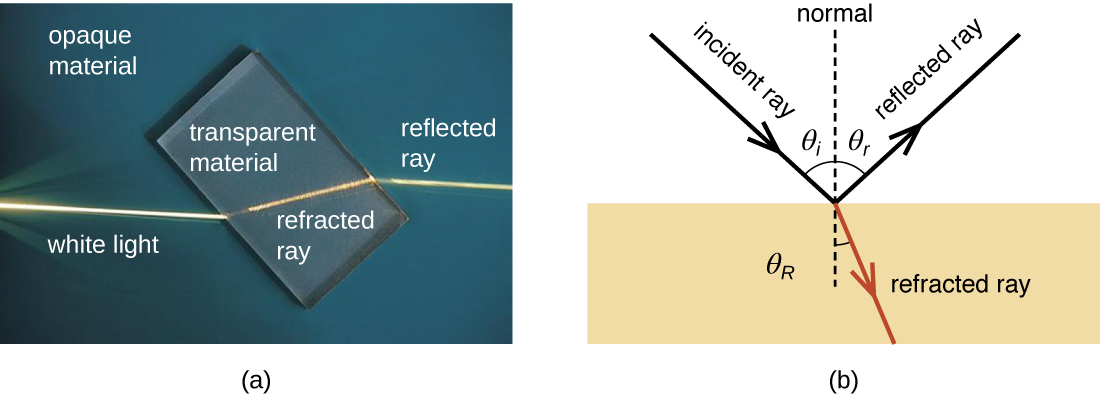| << Chapter < Page | Chapter >> Page > |
Light waves can also interact with each other by interference , creating complex patterns of motion. Dropping two pebbles into a puddle causes the waves on the puddle’s surface to interact, creating complex interference patterns. Light waves can interact in the same way.
In addition to interfering with each other, light waves can also interact with small objects or openings by bending or scattering. This is called diffraction . Diffraction is larger when the object is smaller relative to the wavelength of the light (the distance between two consecutive peaks of a light wave). Often, when waves diffract in different directions around an obstacle or opening, they will interfere with each other.
In the context of microscopy, refraction is perhaps the most important behavior exhibited by light waves. Refraction occurs when light waves change direction as they enter a new medium ( [link] ). Different transparent materials transmit light at different speeds; thus, light can change speed when passing from one material to another. This change in speed usually also causes a change in direction (refraction), with the degree of change dependent on the angle of the incoming light.

The extent to which a material slows transmission speed relative to empty space is called the refractive index of that material. Large differences between the refractive indices of two materials will result in a large amount of refraction when light passes from one material to the other. For example, light moves much more slowly through water than through air, so light entering water from air can change direction greatly. We say that the water has a higher refractive index than air ( [link] ).

When light crosses a boundary into a material with a higher refractive index, its direction turns to be closer to perpendicular to the boundary (i.e., more toward a normal to that boundary; see [link] ). This is the principle behind lenses . We can think of a lens as an object with a curved boundary (or a collection of prisms) that collects all of the light that strikes it and refracts it so that it all meets at a single point called the image point (focus) . A convex lens can be used to magnify because it can focus at closer range than the human eye, producing a larger image. Concave lenses and mirrors can also be used in microscopes to redirect the light path. [link] shows the focal point (the image point when light entering the lens is parallel) and the focal length (the distance to the focal point) for convex and concave lenses .

Notification Switch
Would you like to follow the 'Microbiology' conversation and receive update notifications?